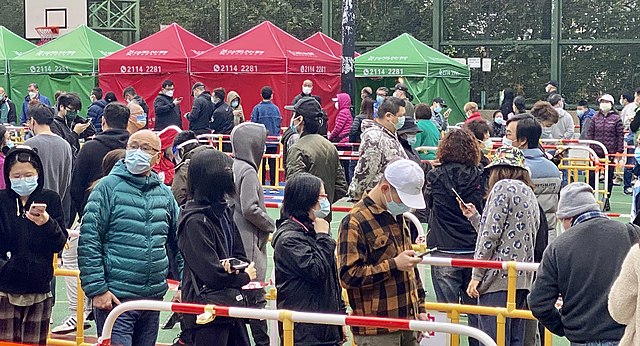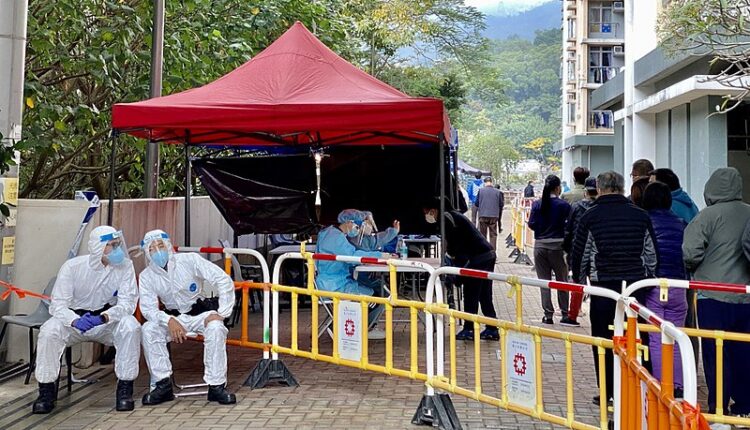The Price of Zero
The Aftermath of Xi Jinping’s Disastrous Zero-COVID Policy

A polarising COVID policy
China’s zero-COVID policy was finally rescinded after years of touting the policy. While most countries shifted to approaches that emphasized living with the virus, China was trapped in a cycle of lockdowns and testing, where one positive case was enough to shut down an entire neighbourhood.
Xi Jinping used the pandemic to further entrench his political power under the pretext of “protecting” Chinese citizens. When zero-COVID was first implemented in Wuhan after the city locked down, the policy worked well enough. Beijing took a cautious approach to COVID-19 when little was still known about the virus. As a country of over 1.3 billion people, with over 166 million of them over the age of 65, any outbreak that was not contained would be catastrophic. The CCP’s hardline policies succeeded in what they had set out to do, and China’s initial COVID-19 surge receded. While countries like the United States were tallying daily COVID-19-related deaths by the thousands, China counted them by the handfuls.
Even as vaccines were developed and more variants emerged, like the infectious Omicron strain, China stayed strong, unfaltering in its zero-COVID policy. But even then, Beijing claimed that the philosophy behind these draconian laws was to prioritize lives above all else, in stark contrast to Western governments’ more lenient approaches. Countries like Canada, which had followed similar policies in the pandemic’s burgeoning stages, gradually shifted away from lockdown measures after successful vaccination campaigns, with most mandates being dropped. Many in China were left frustrated with the lack of reopening. As a result, massive protests erupted across China on a scale unseen since the 1989 Tiananmen Square protests.
Still, public health and safety concerns belie the true intentions behind China’s zero-COVID policy. The Politburo was able to perpetually control and vet millions of residents on a near-daily basis under the guise of protecting them, conveniently stymying opposition, COVID-related or otherwise. While it is true that having an outbreak will devastate China, zero-COVID became insidious the moment the Politburo persisted with the policy even as epidemiologists stated that it would no longer work.

Intimidation strategies
Lockdown orders were issued across all major cities in China, even after proven detrimental to the country, to maintain China’s “zero” COVID-19 cases. Such was the case with Wuhan in 2019, the first city to undergo a lockdown restriction, confining 11 million citizens to their homes.
Although China protected its citizens from this virus, this protection and the increasing lack of freedom became inextricable as the pandemic continued. Xi’s cabinet found a convenient weapon in lockdown measures to suppress dissenters, especially when these orders were happening in the backdrop of the Hong Kong civil unrest. But Beijing knew it could not use this weapon indefinitely. It gave in to public protests that demonstrated citizen agitation, like organized marches, against the zero-COVID policy. The writing on the wall was clear: as much as zero-COVID facilitated the Politburo’s political aims, a country of 1.3 billion people could not be policed forever. Beijing’s fear and intimidation no longer cowed the defiant protesters as their grievances reached a breaking point.
The CCP’s ironfisted compliance was a ploy to exercise power over the protestors. Nearly everyone, from university students to migrant workers, opposed how needlessly burdensome the zero-COVID policy’s restrictions were, not a complete rollback of all COVID-19 policies at once. However, that did not matter to the CCP because they used this to frame these citizens as discontent despite whatever policy was in place.
The months after the repeal
Two months after repealing zero-COVID, China reported that its official COVID-19 death toll is 83,150, which is ten times lower than the United States’ official death count of 1.4 million. Beijing claims this is because of its unparalleled policymaking, but overflowing morgues and hospitals tell a different tale. It is estimated that more than 1.5 million Chinese citizens have died during the pandemic, and the lower public figure is believed to be fabricated. This high death toll is likely due to the Chinese population being more susceptible to receiving the virus post-lockdown because of little herd immunity. Disinformation also abounded on Chinese social media, with sham treatments of iced salt water widely circulating and offering little more than false reassurance amidst the mounting death toll.
Unsurprisingly, the strict three years of lockdowns have taken a toll on the country’s economy. China’s GDP shrank by 2.6 per cent, unemployment reached 6 per cent, and its expected economic growth of 5.5 per cent was missed. Nevertheless, proponents argue that the Politburo chose the lesser of two evils, as there is always a trade-off between economy and health — just not to the extent of keeping zero-tolerance.
China’s political standing in the Asia-Pacific region was also damaged. The 2023 Lowy Institute’s Asia Power Index, which measures a country’s power across eight themes, shows that it declined the most out of the 26 nations studied. The prolonged shutdowns made Chinese businesses unreliable for their service because of supply bottlenecks, crippling the economy. In comparison, the US kept its position as the most influential country in the Asia-Pacific region in areas like economic and military capabilities, even though they also declined in this period. Additionally, distrust of Chinese statistics is prevalent, as its government has misrepresented COVID-19 numbers since the pandemic began. Instead of ascribing deaths to COVID-19, health officials will look for excuses to name it as pneumonia or heart failure instead. Xi tried to eat his cake and have it too. It is near impossible for the Politburo to create international hegemony if they also have problems brewing within its own borders.
In China’s accounting, it excludes people who die outside of hospitals. Experts believe hospital deaths probably still account for only a small proportion of total deaths. China reported few deaths until the recent outbreak. https://t.co/JvnzQYOzUS pic.twitter.com/uhYDM7gxLD
— The New York Times (@nytimes) February 15, 2023
What does this imply?
Despite highlighting their superior strategy in limiting COVID-19 outbreaks, the CCP repealed the policy in December 2022 for ambiguous reasons. This could be due to wanting to retaliate against the protesters or to keep pace with the globe, but it can also be a Machiavellian manoeuvre on Beijing’s part. The rapid repeal of zero-COVID cemented the power the Politburo held instead of undermining it.
Everything is about appearance for China, from the construction of “hospitals” that were just quarantine zones to COVID-19 numbers, Beijing revised its story as it went along. The Chinese censors would have portrayed Xi as the Chinese masses’ hero, irrespective of how his policy turned out. Beijing has already employed historical revisionism to portray its policies as “completely correct,” ignoring the Chinese people’s negative collective experience. Historical revisionism is not a novel concept to China, as its media alleged that COVID-19 came from an American soldier who visited Wuhan to deflect international blame. Minxin Pei of Claremont McKenna College said that Beijing’s new narrative about zero-COVID is to control the discussion surrounding the topic. “Before that, [the zero-COVID success narrative] was tentative. Now, it’s quite aggressive messaging. The words [the Politburo is] using now are really astonishing,” Xei said. “I expect in the next few weeks, you will see a proper campaign accentuating this triumphant message.”
Although the Politburo’s visions are not entirely incredulous, we must not laud them for protecting citizens just to consolidate power. Zero-tolerance or not, the Chinese government aims to emerge victorious. To appear strong when you are weak is a dogma taught by Sun Tzu, so what will this mean for China and how it touts its triumph against COVID-19?
Edited by Pascal Hogue
Featured Image: 数以万计葵涌村居民连日来在蓝球场搭建的临时检测站大排长龙,接受强制病毒检测 (美国之音/汤惠芸) by VOA Chinese is licensed under CC BY-SA 2.0.
